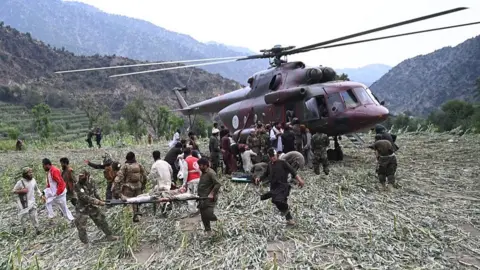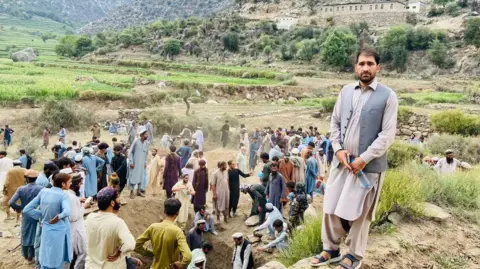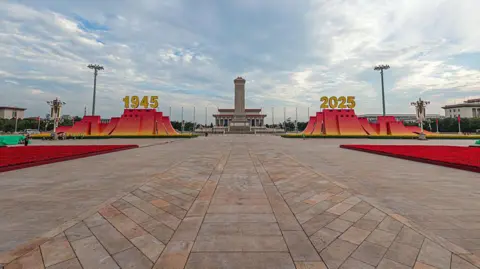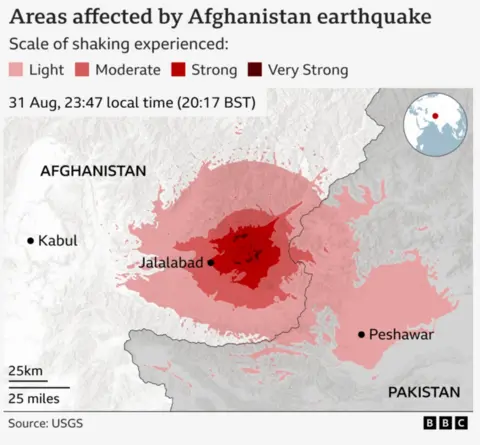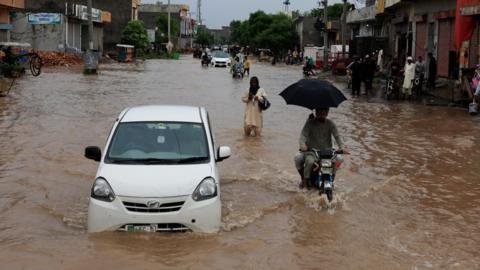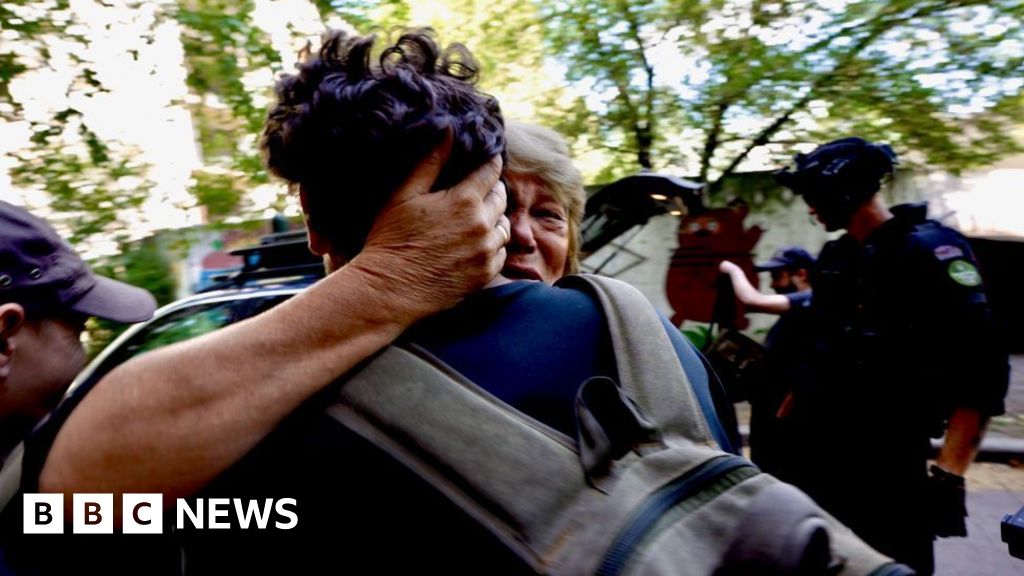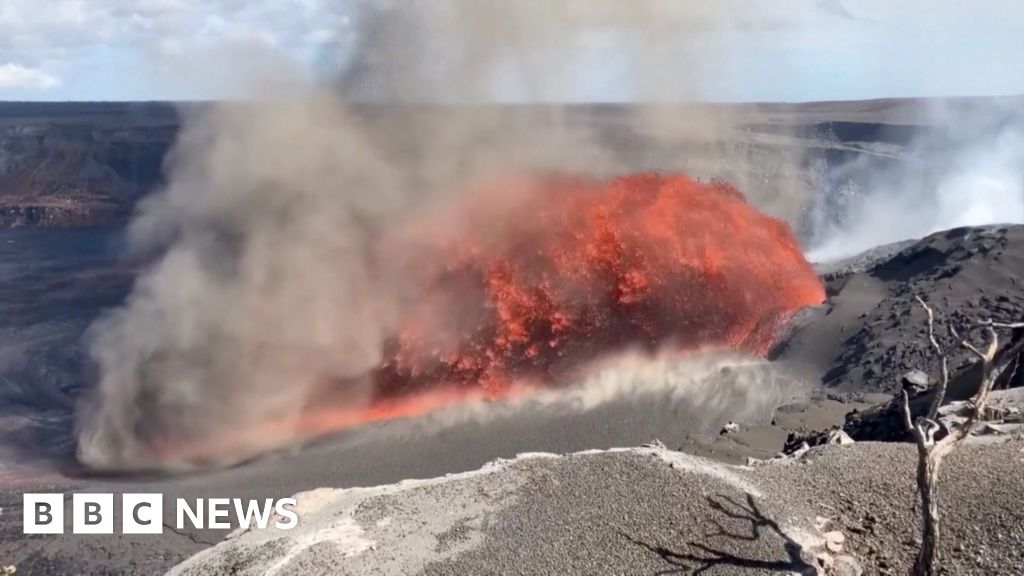The recent earthquake, measuring 8.8 on the Richter scale, struck Russia's Far East near the Kamchatka Peninsula at approximately 11:25 AM local time on Wednesday (00:25 BST). In the aftermath, more than two million residents were ordered to evacuate from various regions, including parts of Russia, Japan, and Hawaii, as tsunami warnings were issued. Fortunately, despite the intensity of the quake, reports indicate minimal damage and no serious injuries have occurred.
In Hawaii, where tourists sought safety on higher ground, waves of 1.2 meters hit Oahu and even larger waves of 1.7 meters affected Maui. Governor Josh Green issued stern warnings, emphasizing the lethal nature of tsunami waves. However, hours later, he reported that significant wave damage had not been observed, resulting in the Pacific Tsunami Warning Center downgrading Hawaii’s warning to an advisory status. The Hawaii Emergency Management Agency's Stephen Logan reassured residents they could safely return home but advised exercising caution while driving and staying alert for potential flooding.
Coastlines along the United States West Coast also braced for the worst. Northern California's Crescent City recorded waves of 1.09 meters (3.6 feet) and San Francisco experienced tidal surges of up to 0.7 meters. Meanwhile, Canada’s British Columbia issued a temporary tsunami advisory for coastal areas, which was later rescinded.
In Russia, where the earthquake originated, some buildings were damaged, particularly in Petropavlovsk-Kamchatsky, but the overall injury toll remained low. There were reports of tsunami waves reaching heights of up to 5 meters (16 feet) in the town of Severo-Kurilsk, which was evacuated as a precaution. Although officials later lifted the tsunami warning for Kamchatka, an eruption of the Klyuchevskoy Volcano was observed, raising further safety concerns.
In Japan, the earthquake had thousands bracing for impact, with waves exceeding a meter hitting the Pacific coast. Evacuations affected nearly two million people, yet initial reports indicated no damage. Japan's Prime Minister Shigeru Ishiba confirmed that the Fukushima nuclear plant, which suffered greatly during the 2011 disaster, reported no abnormalities following the quake.
Further afield, countries across the Pacific, including French Polynesia, Papua New Guinea, and parts of Latin America, faced varying levels of tsunami warnings. With no significant tsunami activity recorded outside the Kamchatka region, alerts were quickly downgraded or canceled.
The earthquake occurred within the Pacific Ring of Fire, an area known for its seismic activity, where around 80% of the world's earthquakes transpire. Remarkably, this quake ranks as the sixth-largest in recorded history, alongside other formidable seismic events.
As regions evaluate their response and recovery, officials remain vigilant in monitoring potential aftershocks and geological disturbances.
In Hawaii, where tourists sought safety on higher ground, waves of 1.2 meters hit Oahu and even larger waves of 1.7 meters affected Maui. Governor Josh Green issued stern warnings, emphasizing the lethal nature of tsunami waves. However, hours later, he reported that significant wave damage had not been observed, resulting in the Pacific Tsunami Warning Center downgrading Hawaii’s warning to an advisory status. The Hawaii Emergency Management Agency's Stephen Logan reassured residents they could safely return home but advised exercising caution while driving and staying alert for potential flooding.
Coastlines along the United States West Coast also braced for the worst. Northern California's Crescent City recorded waves of 1.09 meters (3.6 feet) and San Francisco experienced tidal surges of up to 0.7 meters. Meanwhile, Canada’s British Columbia issued a temporary tsunami advisory for coastal areas, which was later rescinded.
In Russia, where the earthquake originated, some buildings were damaged, particularly in Petropavlovsk-Kamchatsky, but the overall injury toll remained low. There were reports of tsunami waves reaching heights of up to 5 meters (16 feet) in the town of Severo-Kurilsk, which was evacuated as a precaution. Although officials later lifted the tsunami warning for Kamchatka, an eruption of the Klyuchevskoy Volcano was observed, raising further safety concerns.
In Japan, the earthquake had thousands bracing for impact, with waves exceeding a meter hitting the Pacific coast. Evacuations affected nearly two million people, yet initial reports indicated no damage. Japan's Prime Minister Shigeru Ishiba confirmed that the Fukushima nuclear plant, which suffered greatly during the 2011 disaster, reported no abnormalities following the quake.
Further afield, countries across the Pacific, including French Polynesia, Papua New Guinea, and parts of Latin America, faced varying levels of tsunami warnings. With no significant tsunami activity recorded outside the Kamchatka region, alerts were quickly downgraded or canceled.
The earthquake occurred within the Pacific Ring of Fire, an area known for its seismic activity, where around 80% of the world's earthquakes transpire. Remarkably, this quake ranks as the sixth-largest in recorded history, alongside other formidable seismic events.
As regions evaluate their response and recovery, officials remain vigilant in monitoring potential aftershocks and geological disturbances.








